5 Unconventional Materials in Contemporary Art
Contemporary sculpture long ago broke free from classical forms and traditional aesthetics. More and more often, artists choose nondurable,...
Zacheta 18 December 2025
Dan Flavin (1933–1996) was an American artist and pioneer of Minimalism. He is famous for making sculptural objects and installations from fluorescent lights.
I like art as thought better than art as work… It’s important to me that I don’t get my hands dirty. Not because I’m instinctively lazy. It’s a declaration: art is thought.
Michael Govan, Dan Flavin: A Retrospective, Dan Flavin and Tiffany Bell, 2004, p. 194.

Initially, Flavin’s works were drawings and paintings. These show the influence of Abstract Expressionism. This is a term used for art from the 1940s and 1950s in America that is all about spontaneity, for example, art by Jackson Pollock and Mark Rothko. Flavin was influenced by the idea of found objects in art, and he particularly liked using crushed cans.
It was in 1961 that Flavin moved toward the idea of electric lights. He first made the icons, which placed the lights onto single-color boxes, which were made from various materials such as wood, Formica, or Masonite. By 1963 however, the canvas was gone, and Flavin began to work with his signature fluorescent tubes.
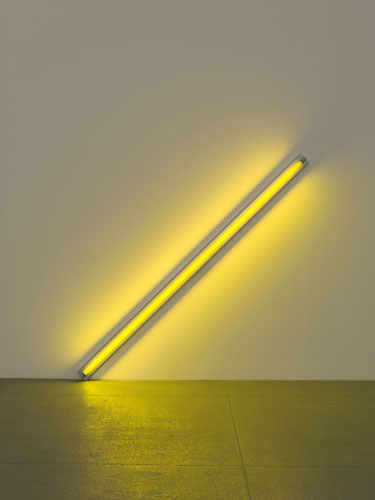
Diagonal of Personal Ecstasy (The Diagonal of May 25, 1963), a yellow fluorescent tube placed on a wall at a 45-degree angle from the floor and completed in 1963, was Flavin’s first mature work; it is dedicated to Constantin Brâncuși, a well-known French sculptor and painter. These pieces grew and grew, eventually filling entire rooms!
The fluorescent tubes that Flavin used were always straight and either 2 ft (0.61 m), 4 ft (1.22 m), 6 ft (1.83 m), or 8 ft (2.44 m) long. His work is a consideration of electric light—its atmospheric and color properties.
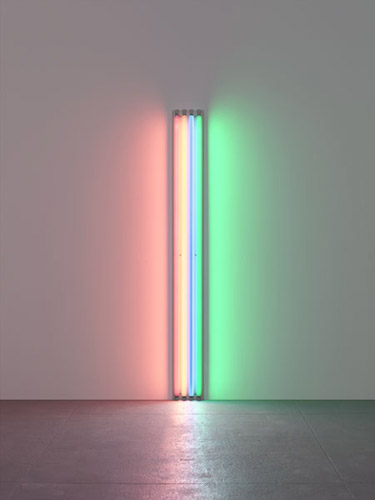
If a buyer who had the correct certificate and diagram for the work, approached Flavin with a broken fixture, Flavin would replace it. This is the beauty of using commercially available lights! By this method, Flavin subverts the mundane, in both material and form. Thus, he creates a wide variety of works and experiences for viewers.
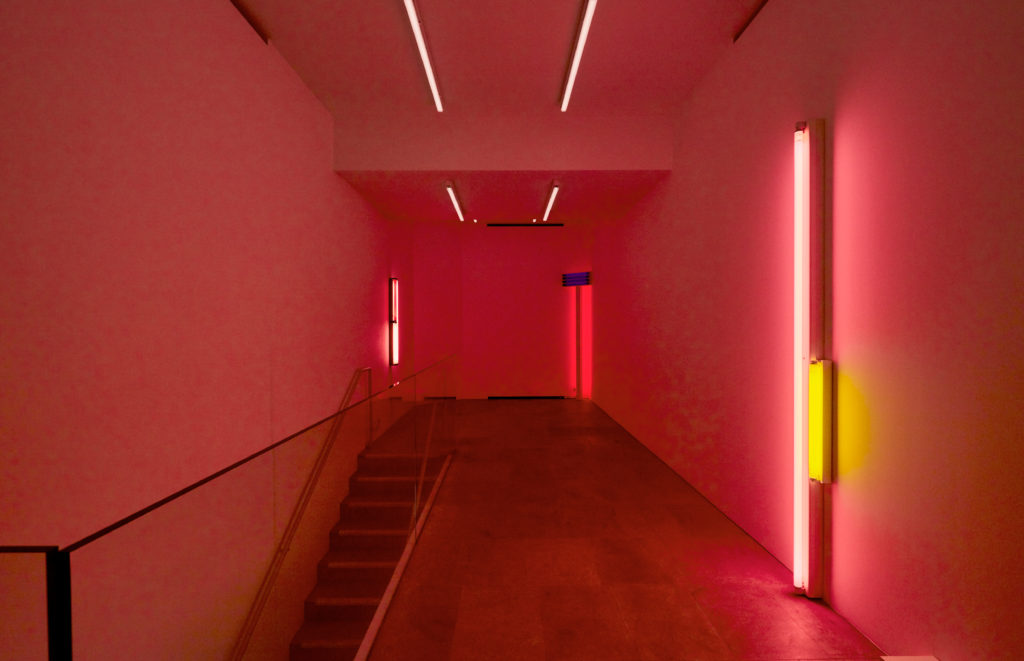
The colors of the piece are limited to red, blue, green, pink, yellow, ultraviolet, and white. Technically, however he uses four different shades of white.
The sculptures explore ideas of color, light, and space by virtue of these strict forms. Through this simplicity, Flavin’s work sets the stage for much of the experience-oriented, immersive installations that are an integral part of the contemporary art scene today.
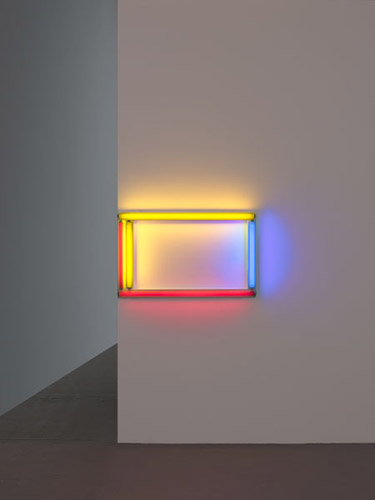
Flavin’s work is almost always untitled but dedicated to someone, inevitably evoking a personal or referential element in his work. Flavin often dedicated his works to friends, family, and inspirations; his first dedication was to his twin brother, David John Flavin, shortly after his death in 1962.
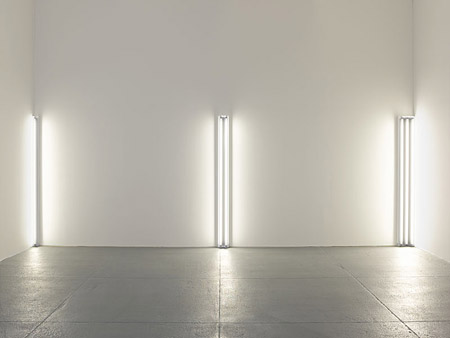
The nominal three (to William of Ockham), dedicated to the 14th-century English philosopher, exemplifies Flavin’s use of the fluorescent tube as a basic building block for much more expansive pieces.
In the 1970s and 1980s, Flavin began to create more complex installations of fluorescent tubes, notably his “Barred Corridors” and corner installations.
Flavin’s practice has “an acute awareness of the phenomenology of rooms.”
Mel Bochner, Serial Art Systems: Solipsism, Arts Magazine 41, no. 8 (summer 1967).
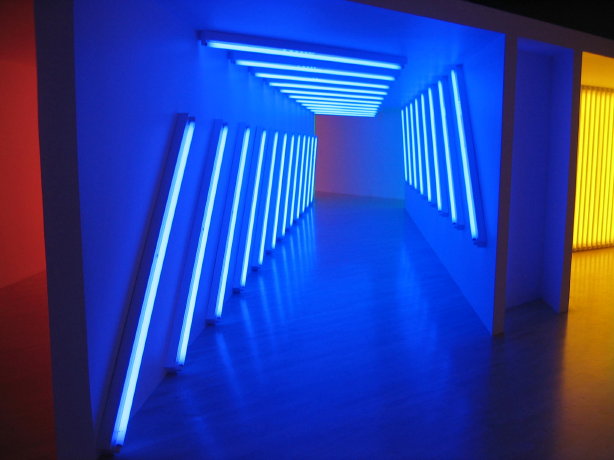
The corridors control the movement of the viewer and were configured in many different ways. The works use a vocabulary of “corners,” “barriers,” and “corridors” to re-conceptualize the sculpture in relation to space.
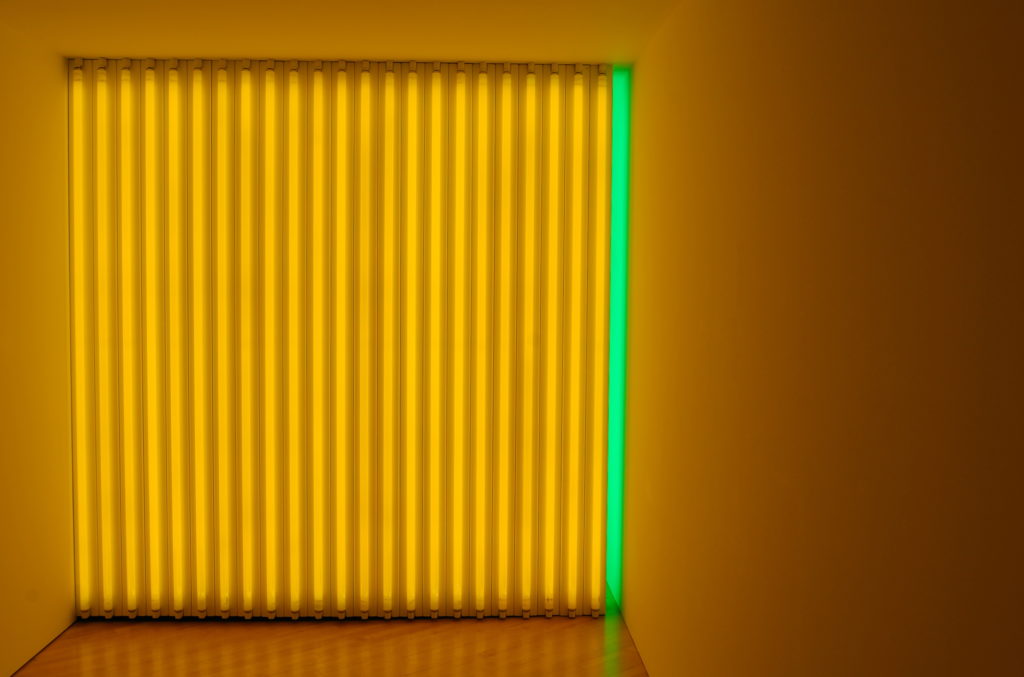
Flavin’s first corridor, untitled (to Jan and Ron Greenberg), was made for a 1973 solo exhibition and is dedicated to a local gallerist and his wife. It is yellow and green with a small gap that allows a glow of color to seep through. These spacings and gaps became a regular feature of the corridors and allowed Flavin to play with mixing light for the viewer.
Flavin’s work increasingly concentrates on the relationship between sculptures and the spaces they use. In the 1990s, art institutions across Europe and America began to offer larger galleries to Flavin, allowing the scale of his work to become more monumental.

Flavin died in 1996 from complications related to diabetes. However, two days before his death, he completed his final artwork. It was a site-specific piece in the church of Santa Maria Annunciata (Chiesa Rossa) in Milan, Italy, which can still be visited today
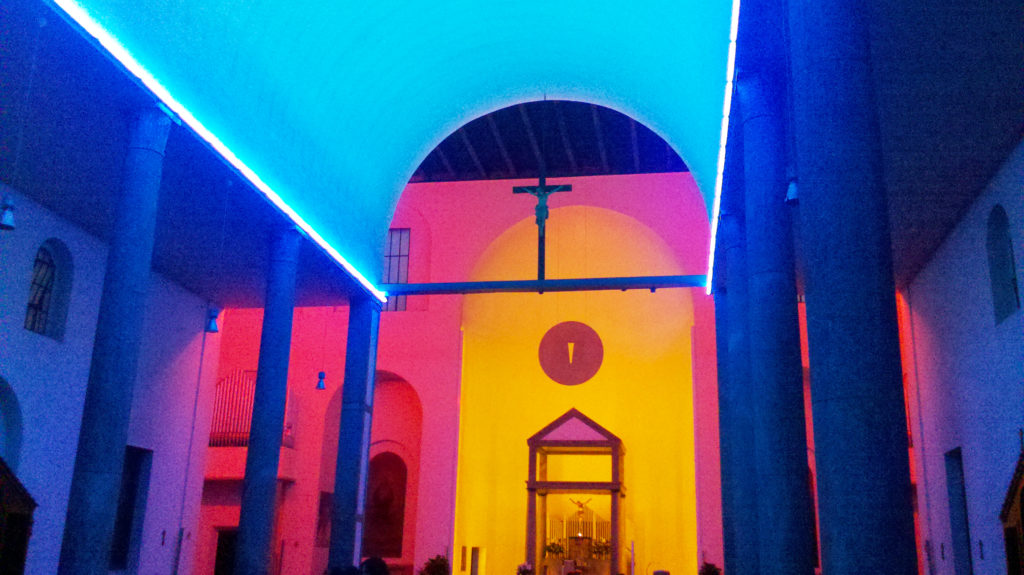
DailyArt Magazine needs your support. Every contribution, however big or small, is very valuable for our future. Thanks to it, we will be able to sustain and grow the Magazine. Thank you for your help!